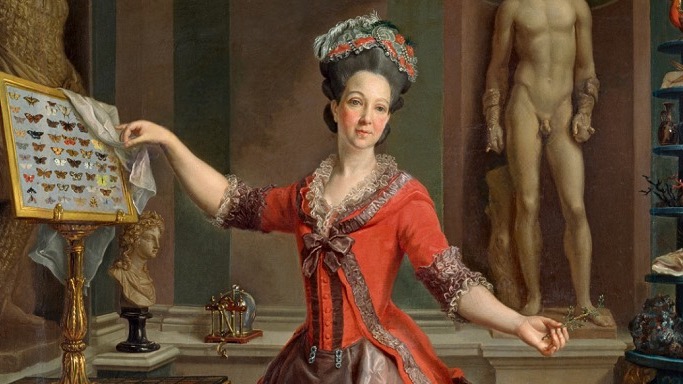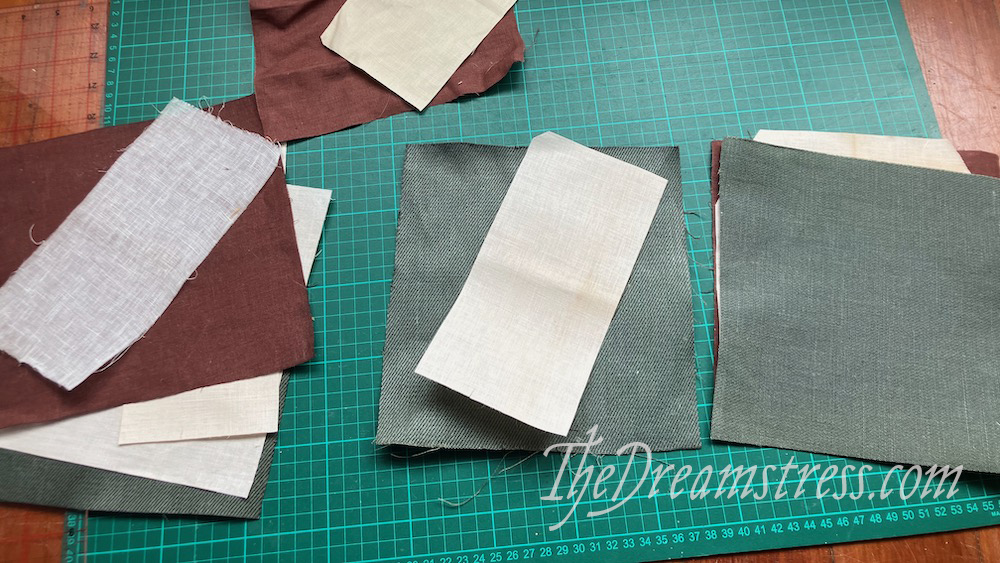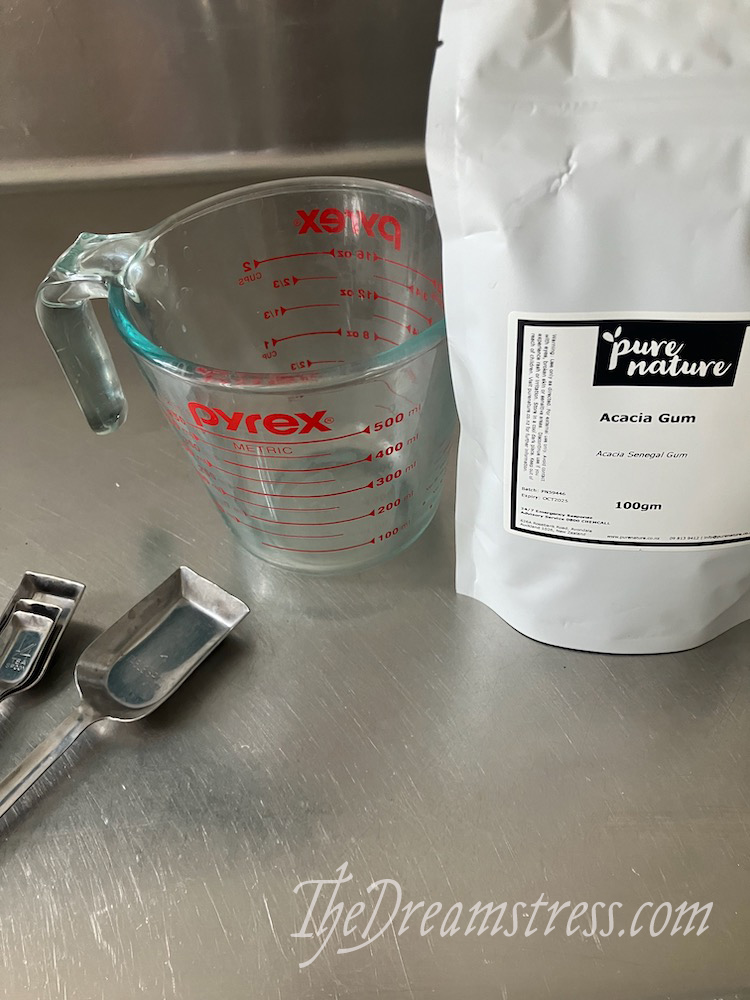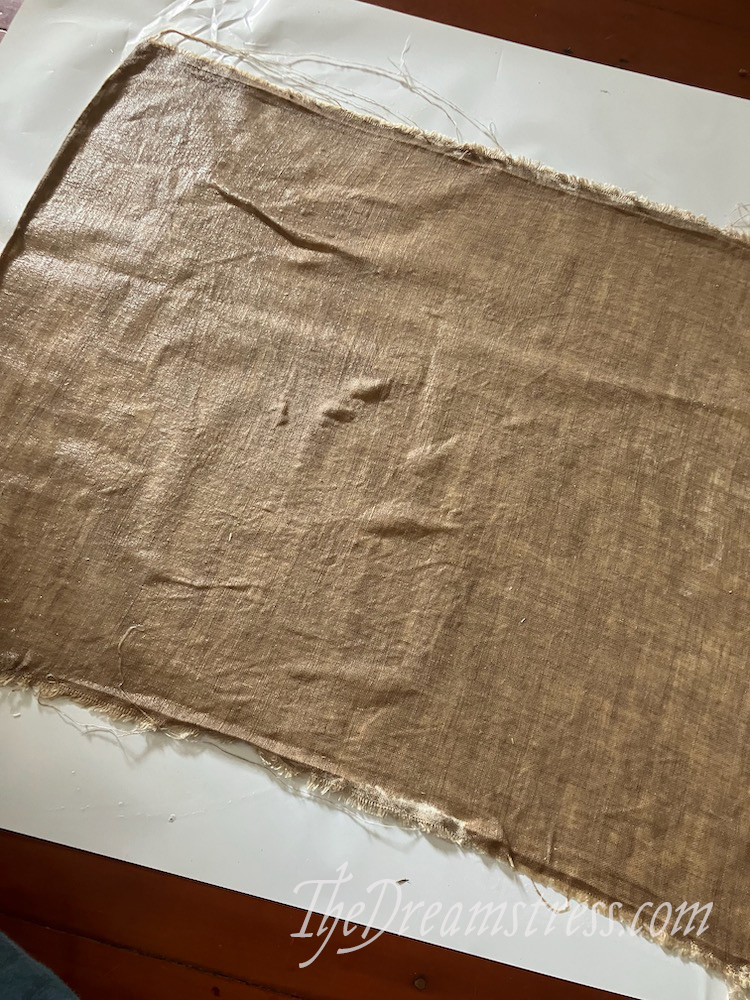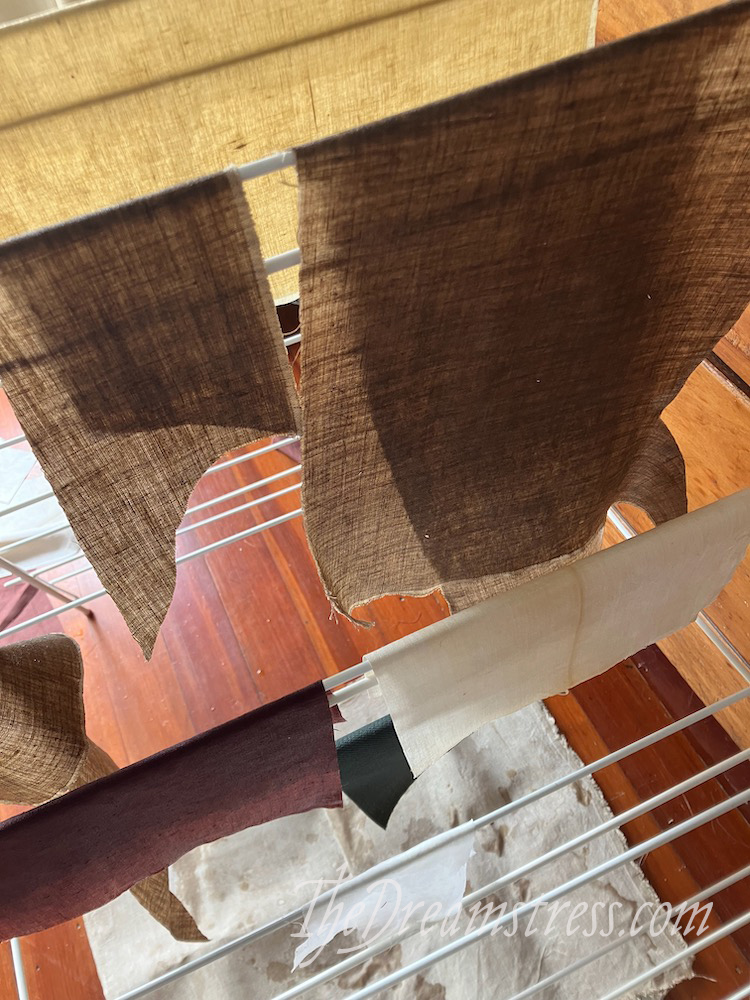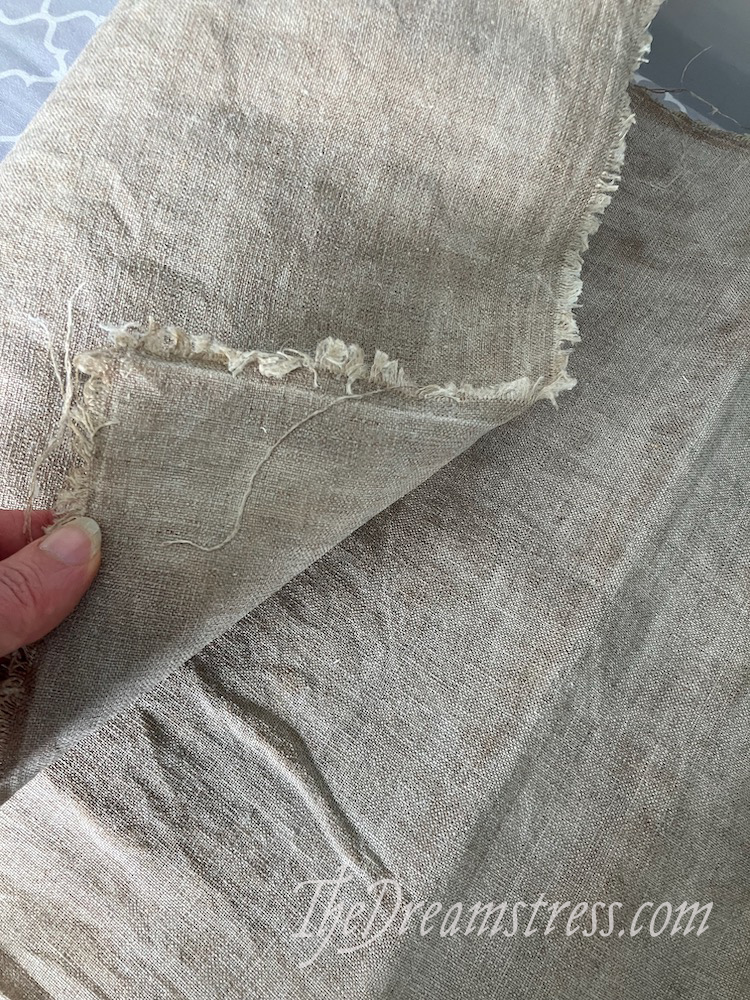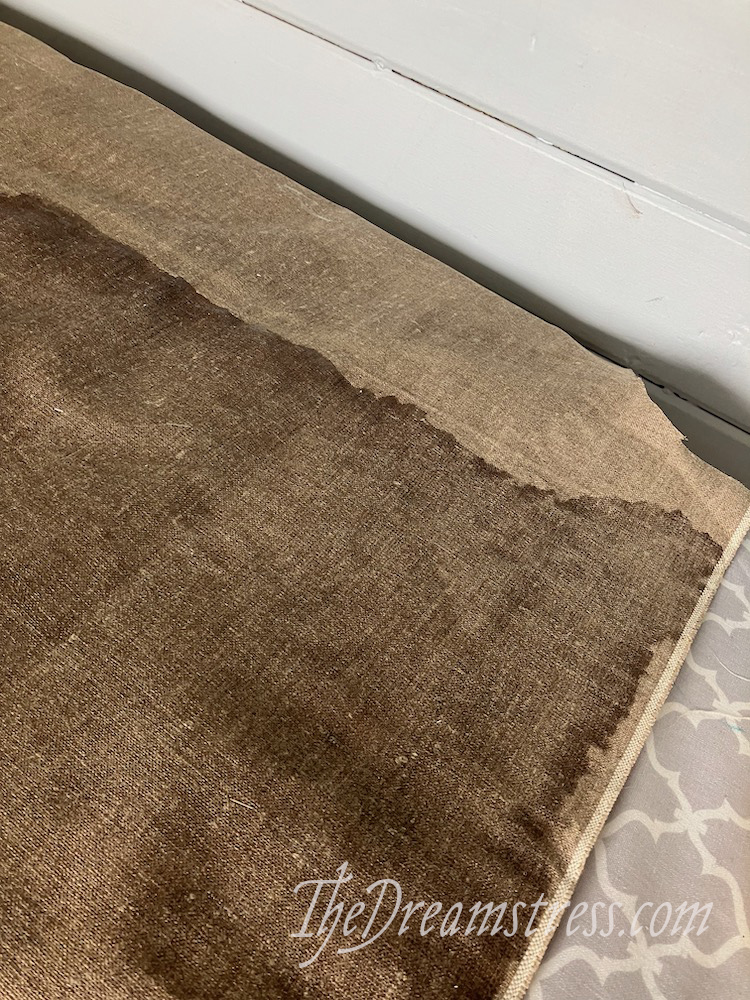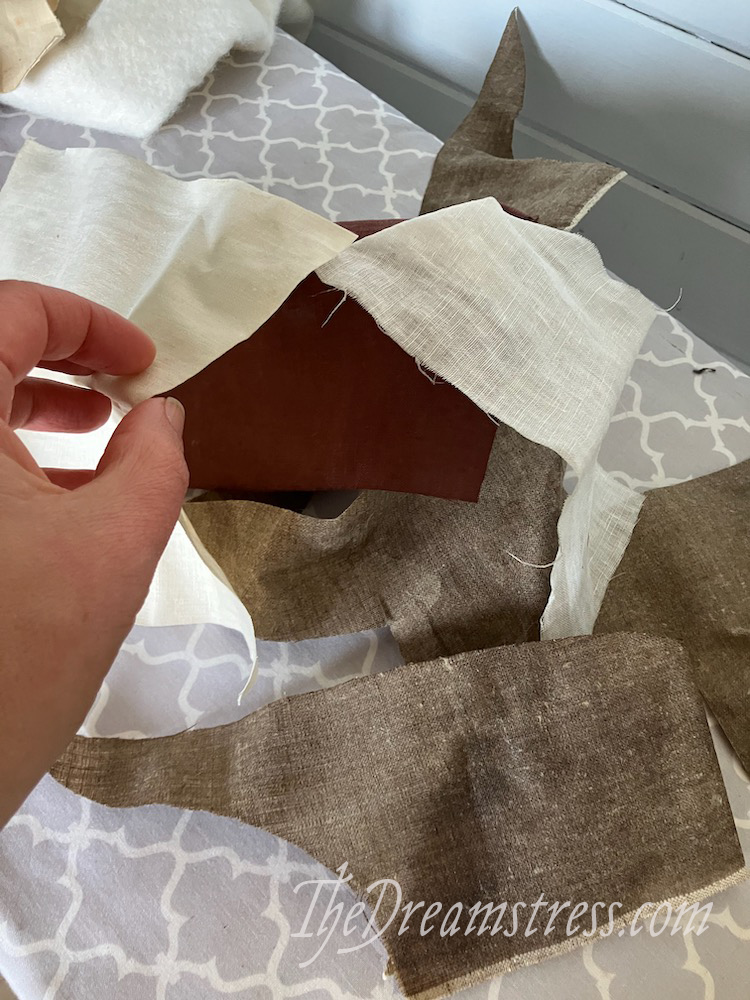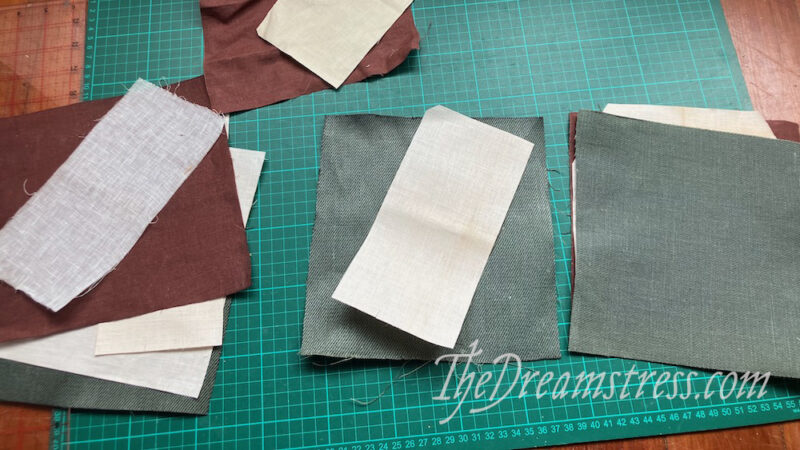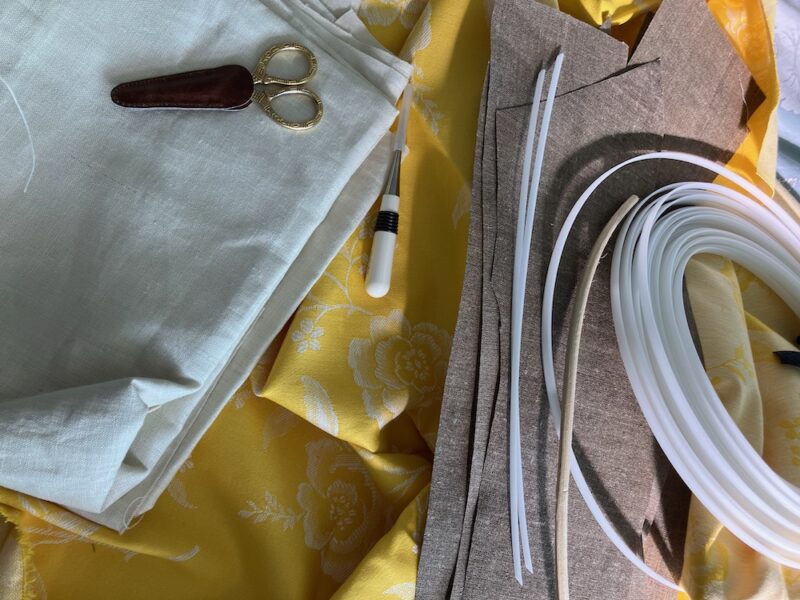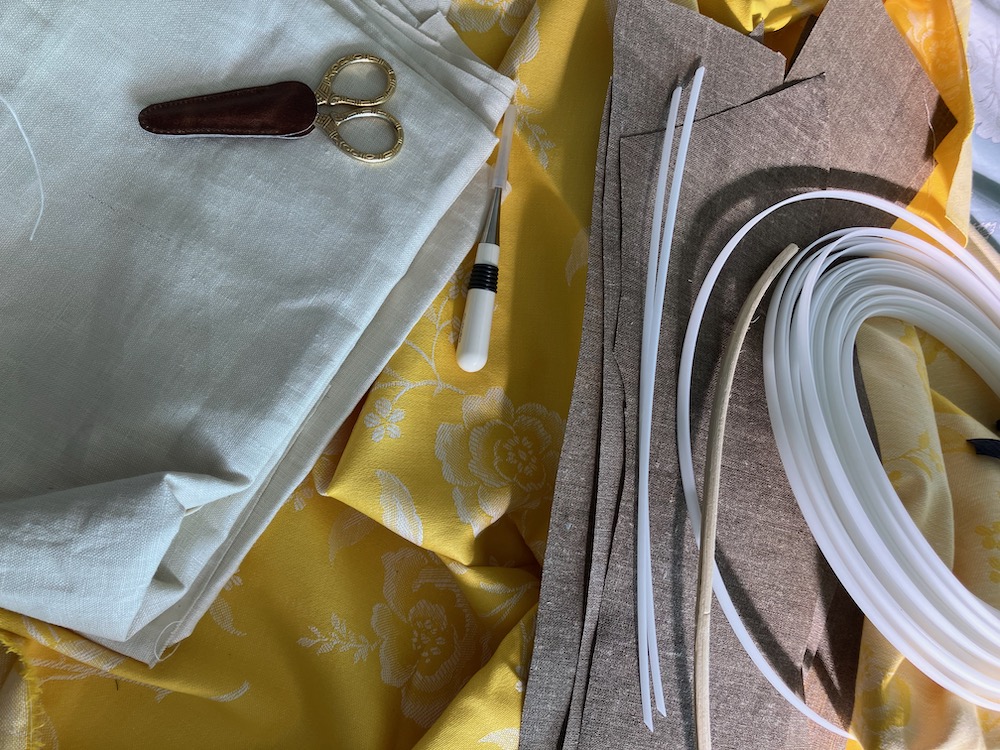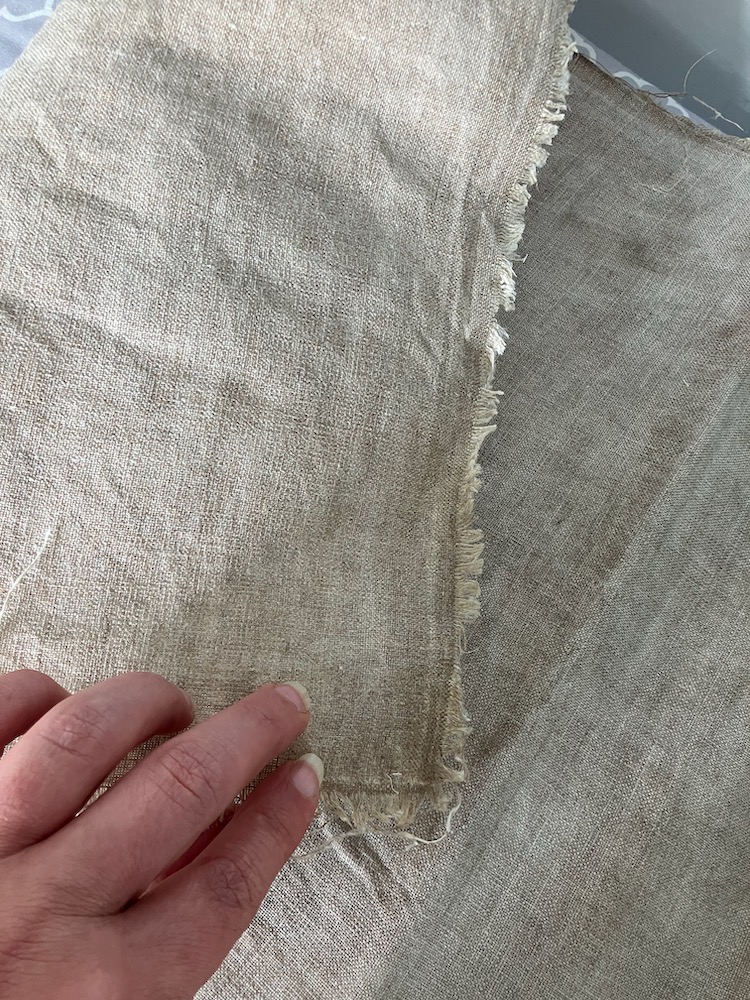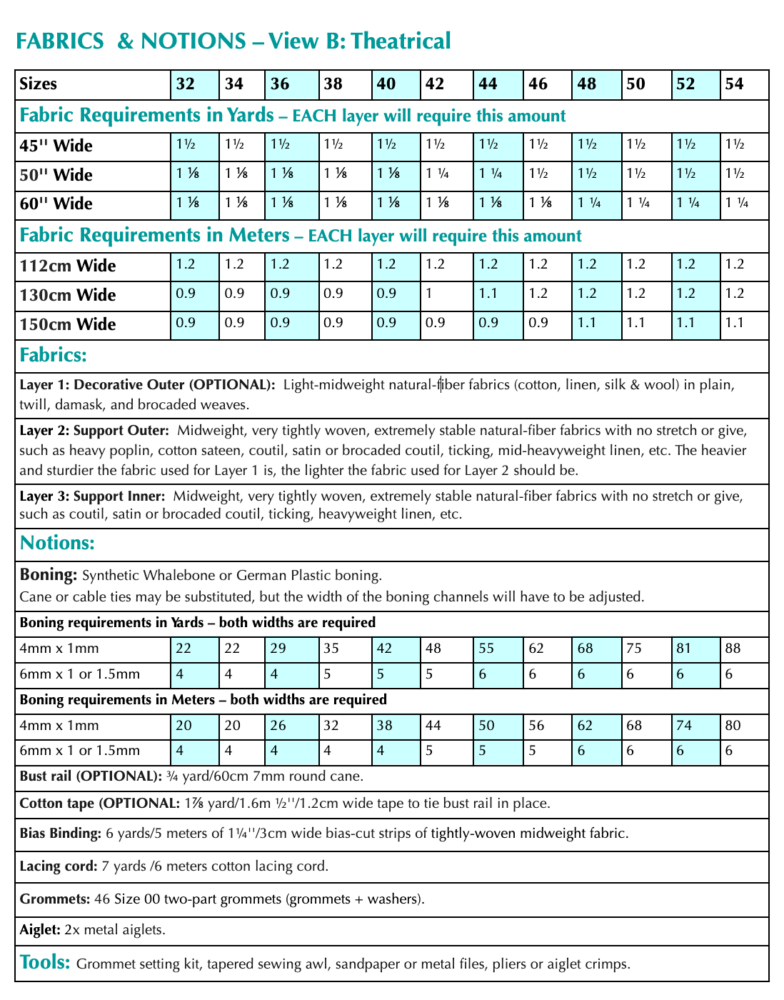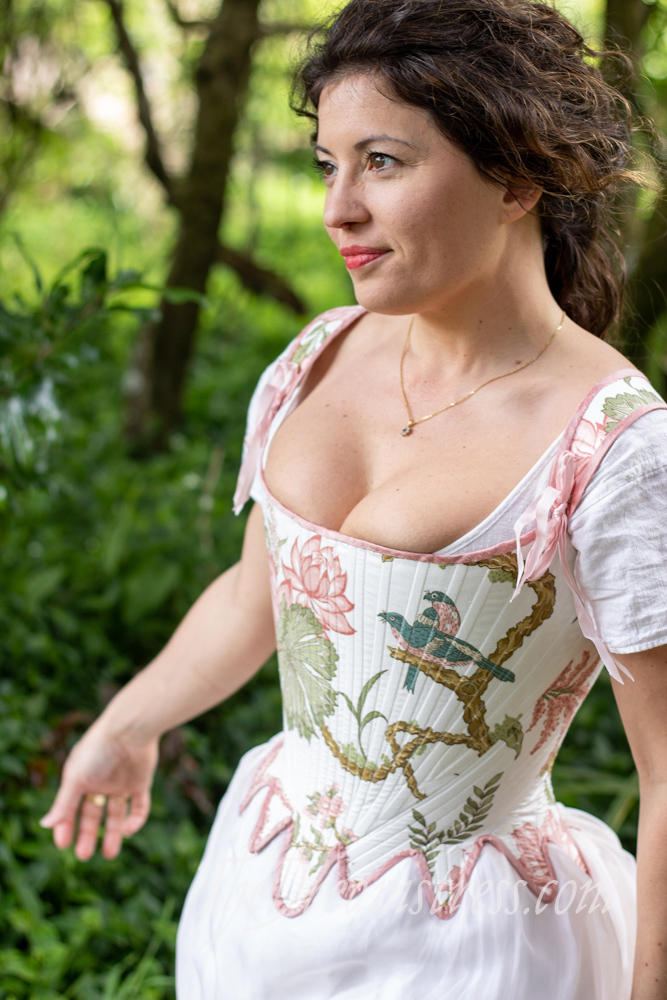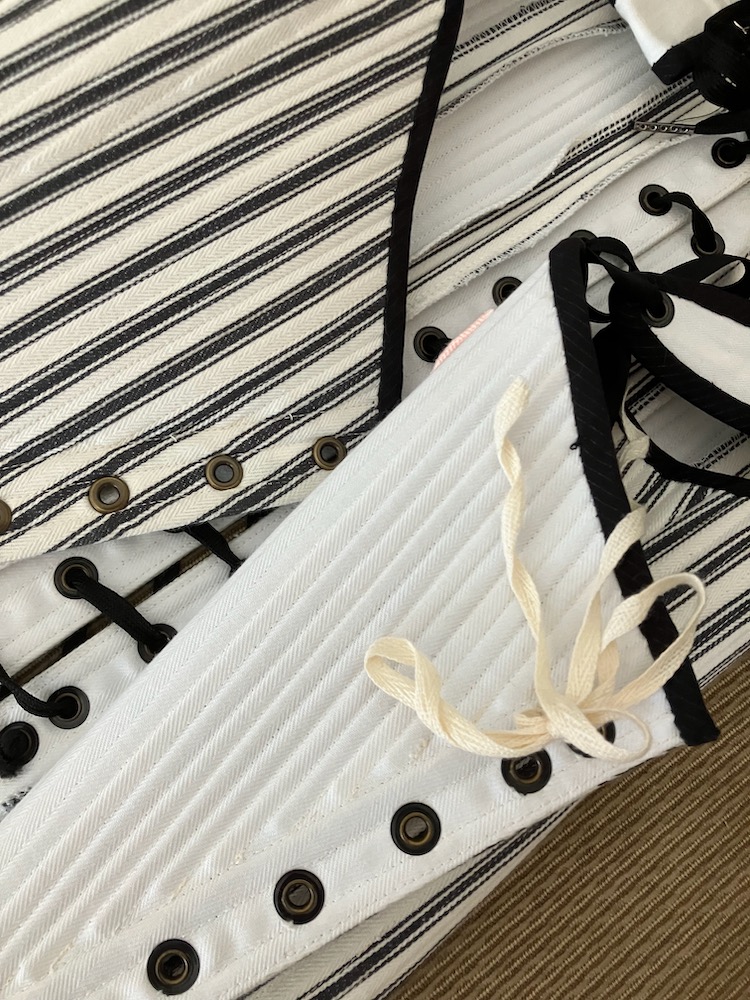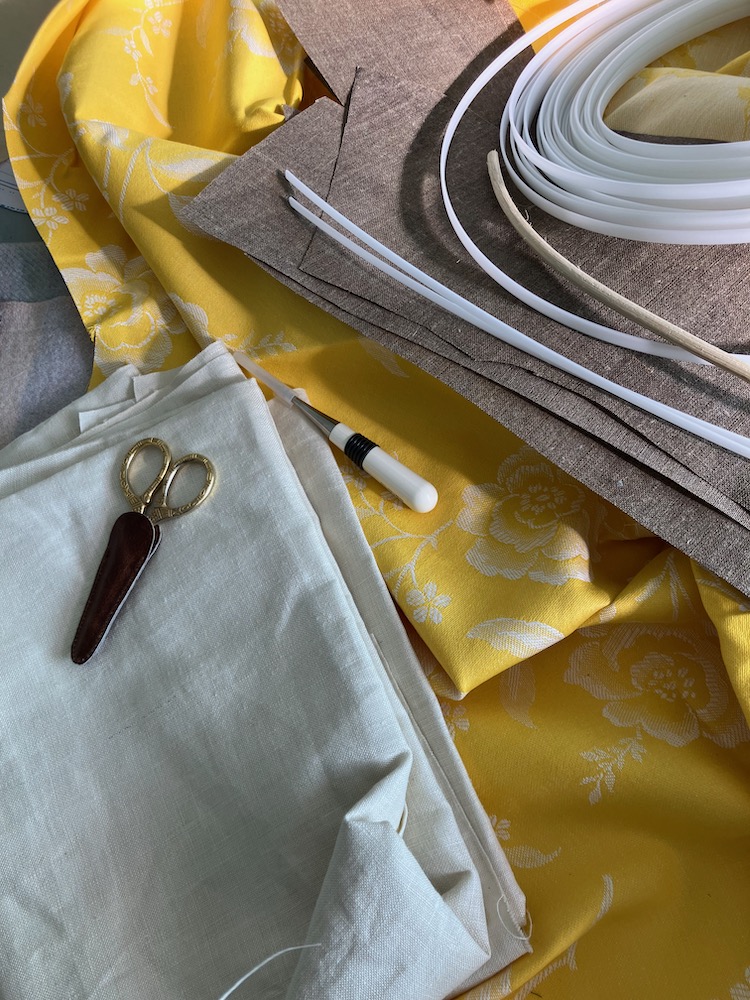The re-launch of Rate the Dress came at the same time as the launch of the Cassandra Stays, and this week’s Rate the Dress is interrupting the Cassandra Stays Sew-Along, so I think it’s only fitting that I do a Rate the Dress featuring a garment that could be worn over the Cassandra Stays!
Last week: a 1910s dress in white and orchid purple.
Ooof, a very mixed bag of reactions to last week’s Rate the Dress! Everything from a perfect 10 to a devastatingly low 3! Most of you liked the dress…except, that is, for the back collar. But others felt that there were too many discordant details, and rated it accordingly.
The Total: 7.7 out of 10
Better than last week, but with a greater spread of ratings.
This week: the Marchesa a la modé in puce and coral
Looking back over Rate the Dress, portraits to be rated do not attract as many comments as extant garments. They do, however, sometimes attract more interesting and in-depth comments, so I’m hoping that will be the case this week.*
This week I present The Marchesa Margherita in a very fashionable late 1770s ensemble.
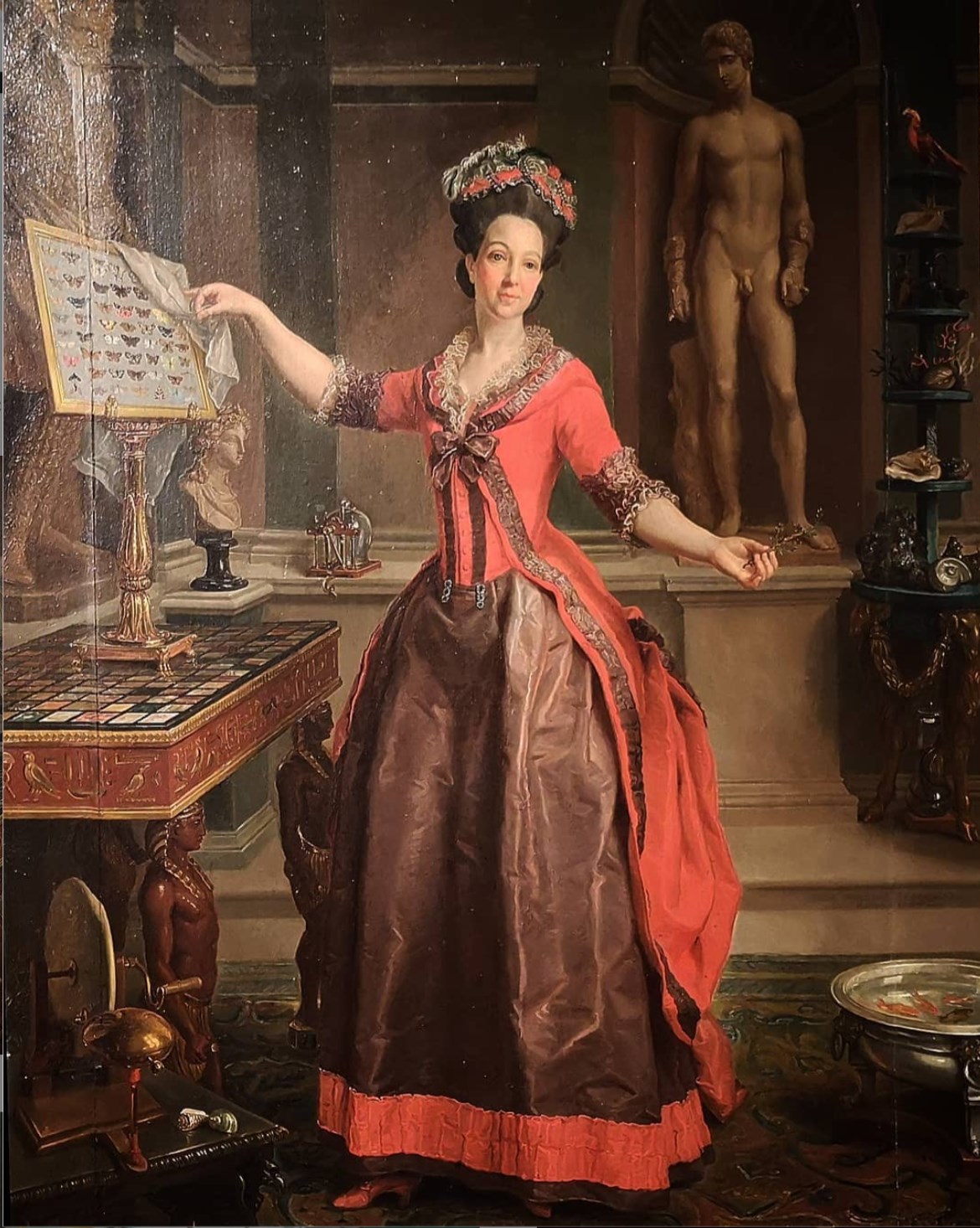
Portrait of the Marchesa Margherita Sparapani Gentili Boccapaduli by Laurent Pécheux, 1777, Palazzo Braschi
I found two different versions of the Italian aristocrat’s portrait: one darker and more muted, and another bright and clear, with every detail visible, from her butterfly collection, to her Egyptomania table, to her goldfish bowl. The portrait is intended to show off the Marchesa’s knowledge and interests, attributes that made her a famed salonière, as much as her looks or fashionable dress.
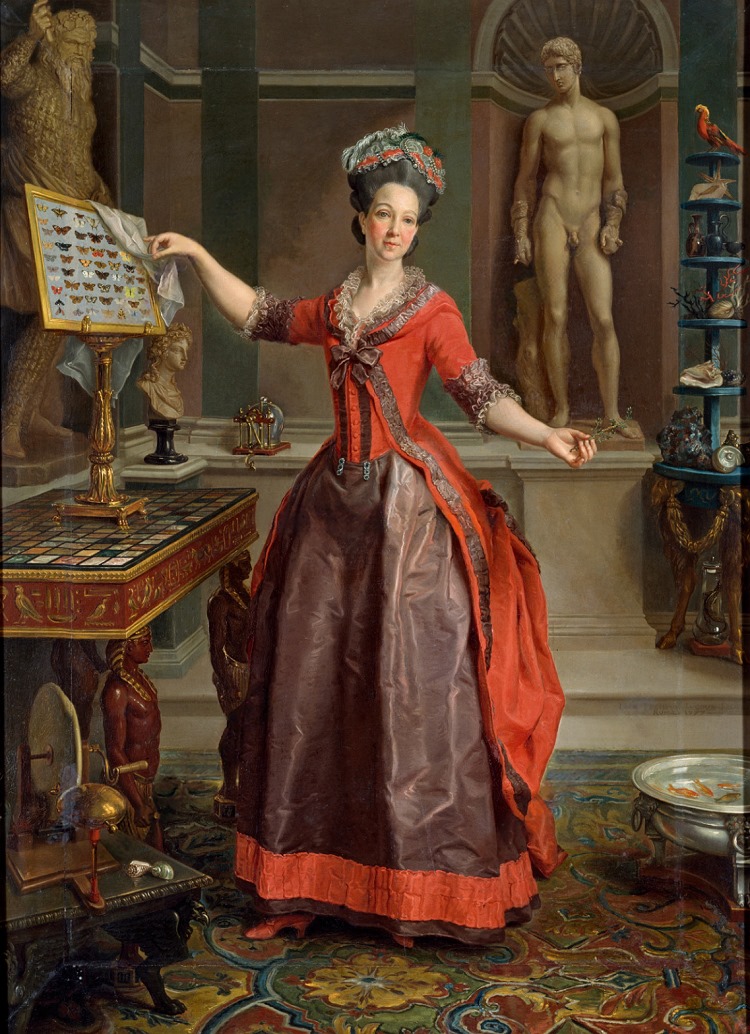
Portrait of the Marchesa Margherita Sparapani Gentili Boccapaduli by Laurent Pécheux, 1777, Palazzo Braschi
And her dress is very fashionable. Extremely a la modé for 1777. The Marchesa wears a petticoat in dark puce, trimmed with a flat ruffle of vivid coral around the hem. The colours of her petticoat are reversed in her upper garments: a polonaise with cutaway, buttoned front, bustled skirt, and hood. Narrow flat ruched puce trimming frames the hood, front of the cutaway, and the skirt. The sleeves are edged with deep cuffs of ruched puce silk.
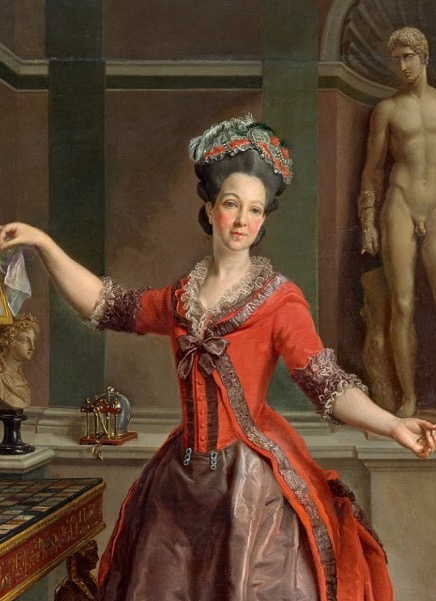
Portrait of the Marchesa Margherita Sparapani Gentili Boccapaduli by Laurent Pécheux, 1777, Palazzo Braschi
The whole ensemble is finished with lace frills at cuffs and down the neckline, and a fashionably high hairdo topped with a pearl and feather trimmed turban. Her shoes are in coral to match the ensemble and balance the coral bodice and overskirt. She wears no jewellery other than matching clips at the bottom of her bodice, which features the shallow round dipped waist that was in vogue in the late 1770s.
The contrasting colours and reversed petticoat and upper colour scheme were very fashionable in this period, but there aren’t that many surviving examples of the style, so it’s wonderful to see a portrait that demonstrates the look so clearly, with all the styling and accoutrements.
So, what do you think of this distinctly 1777 moment in fashion history? Does the Marchesa’s dress match her curious mind and vivacious personality, or should she have gone for a more timeless look?
Rate the Dress on a Scale of 1 to 10
A reminder about rating — feel free to be critical if you don’t like a thing, but make sure that your comments aren’t actually insulting to those who do like a garment. Phrase criticism as your opinion, rather than a flat fact. Our different tastes are what make Rate the Dress so interesting. It’s no fun when a comment implies that anyone who doesn’t agree with it, or who would wear a garment, is totally lacking in taste.
As usual, nothing more complicated than a .5. I also hugely appreciate it if you only do one rating, and set it on a line at the very end of your comment.
*not that your comments haven’t been interesting and in-depth, I just think quite a lot could be said about the clothes in this portrait!

